Earlier this week, I presented a program on repotting for the East Bay Bonsai Society. We started by covering techniques for securing trees into containers based on the numbers of holes in the pot (see “Securing” for details).
Next we looked at the process with a live tree – a dwarf wisteria. After performing the root-work, we got to the fun part: selecting a new container.
The first photo shows the tree in its previous container. Because I want the the tree to grow up a size, the other options are larger.
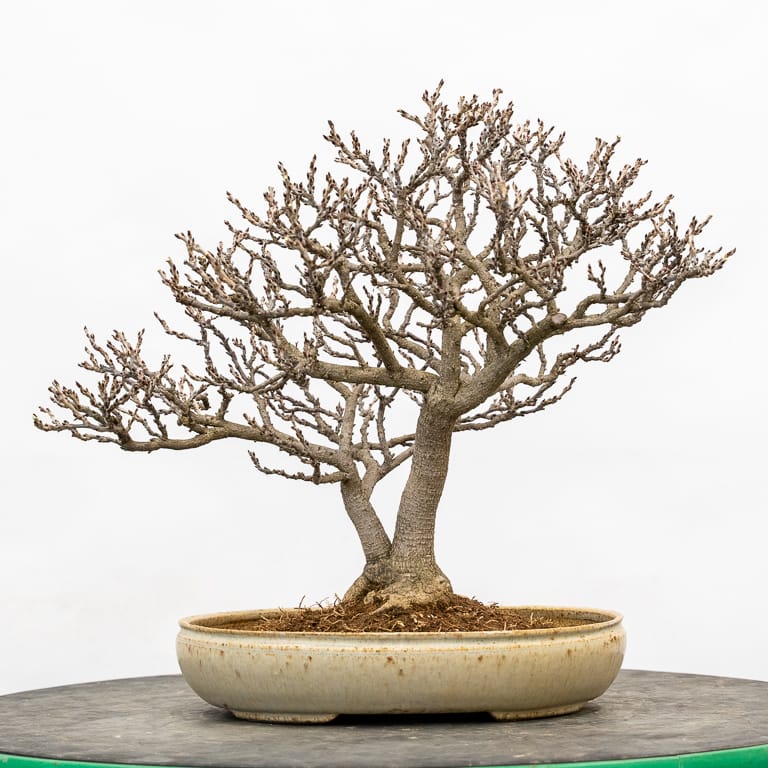
Pot #1 – Victoria Chamberlain (the previous container)
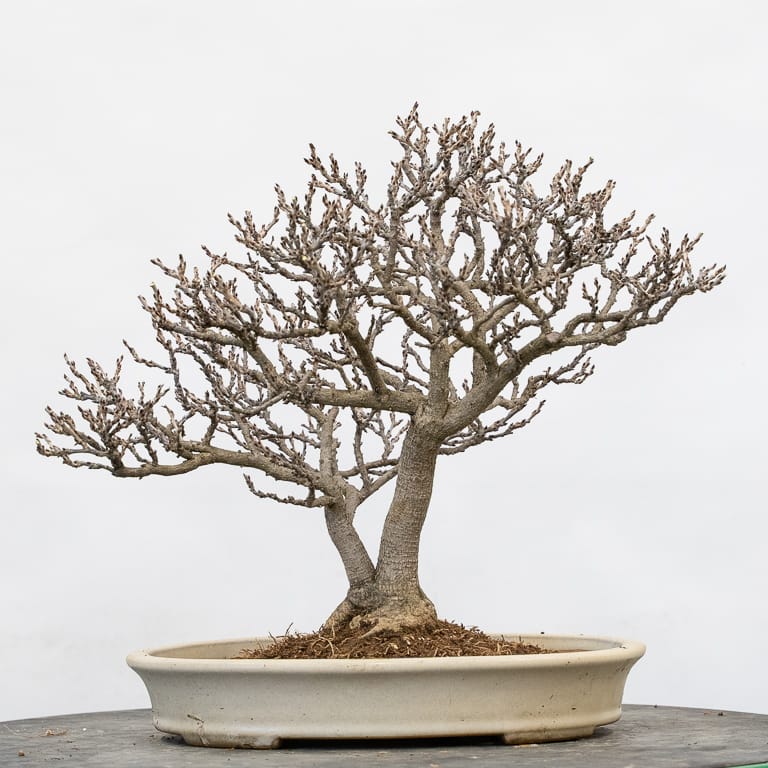
Pot #2 – Reiho
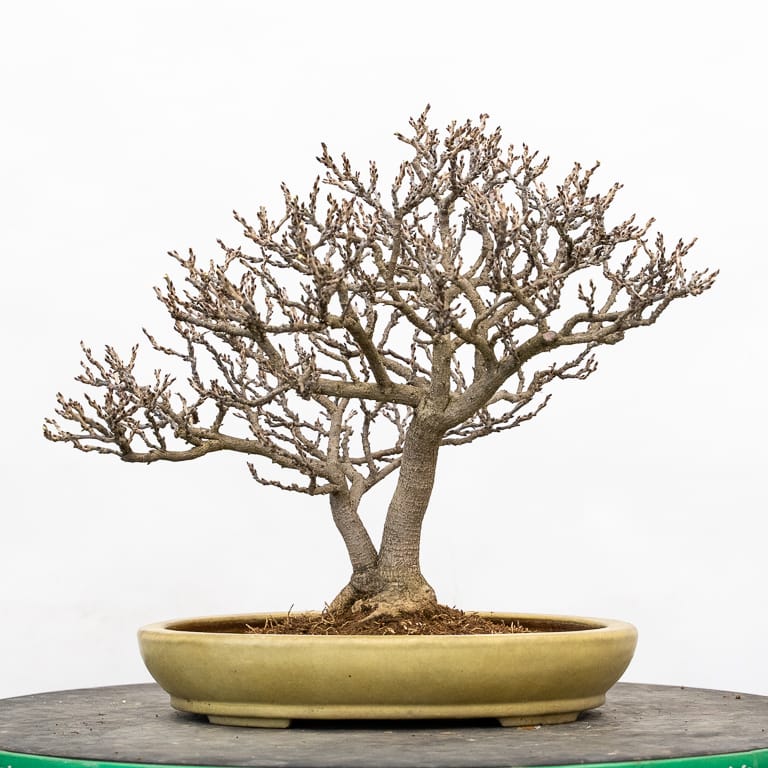
Pot #3 – Japanese
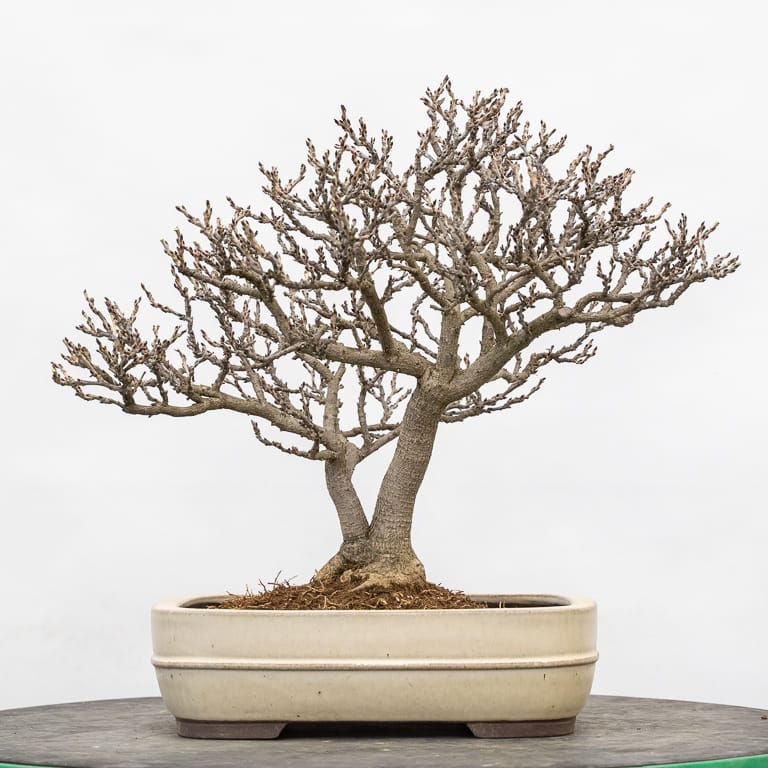
Pot #4 – Yamaaki
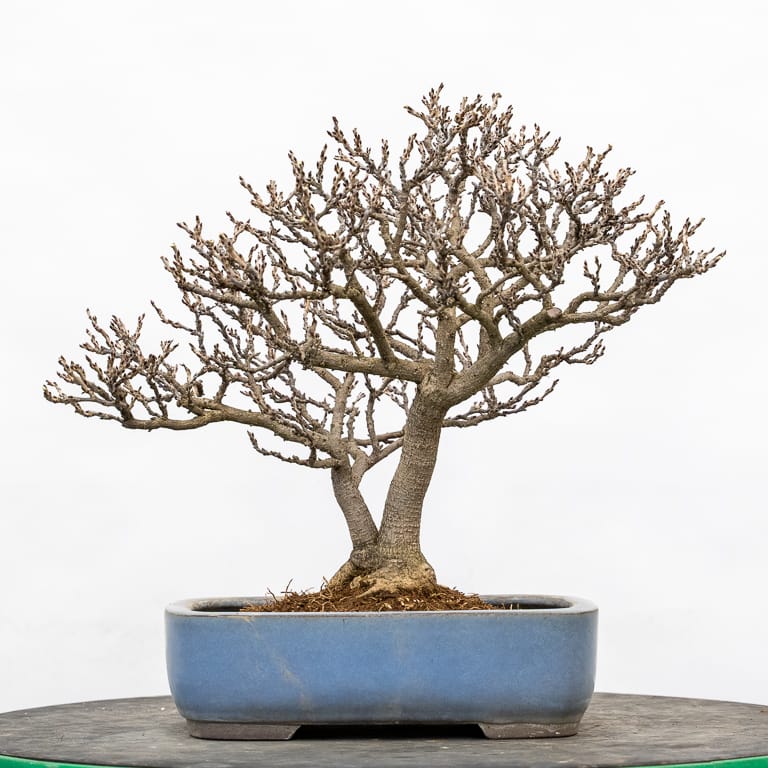
Pot #5 – Yamaaki
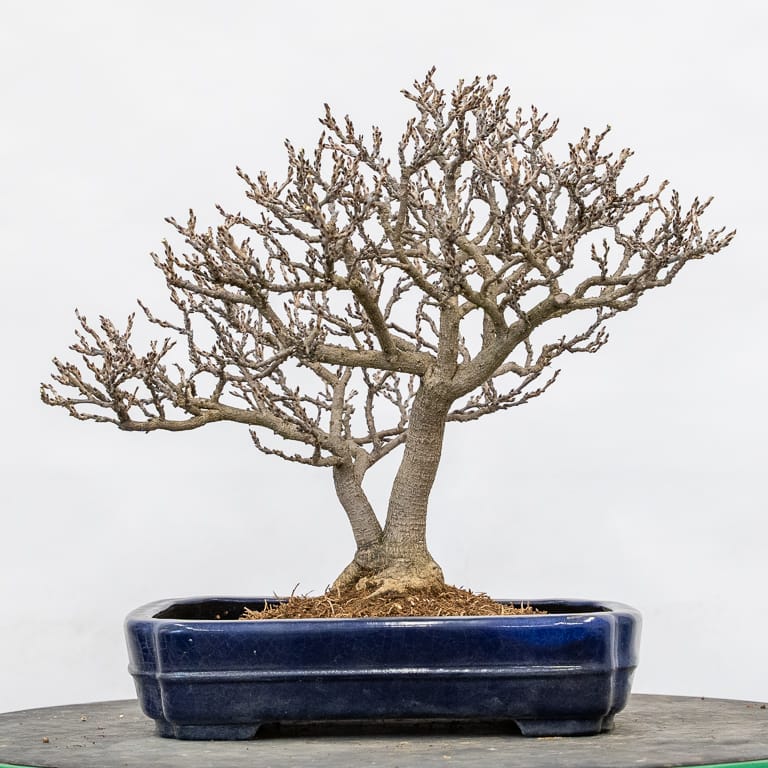
Pot #6 – Yamaaki
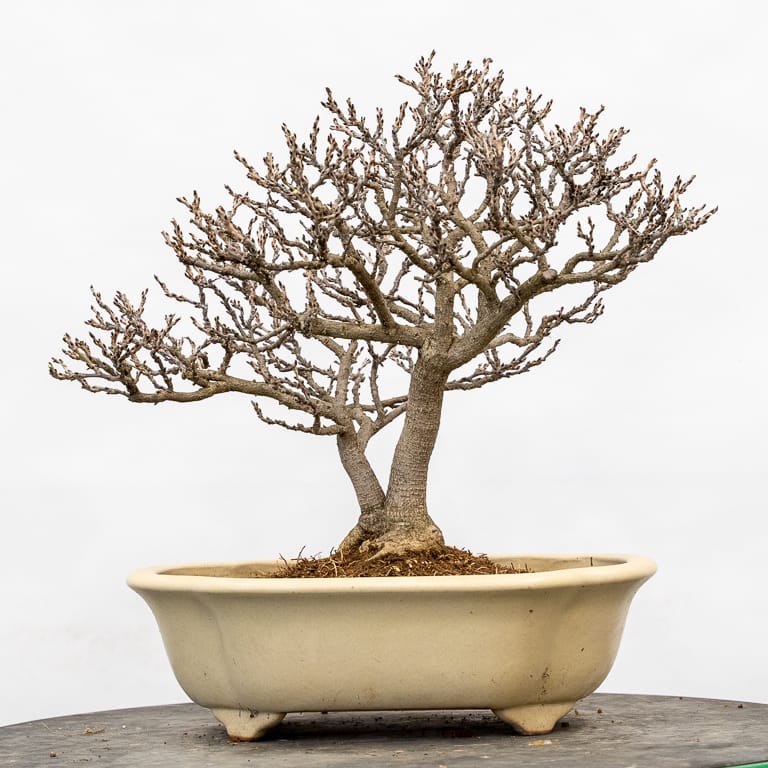
Pot #7 – Reiho
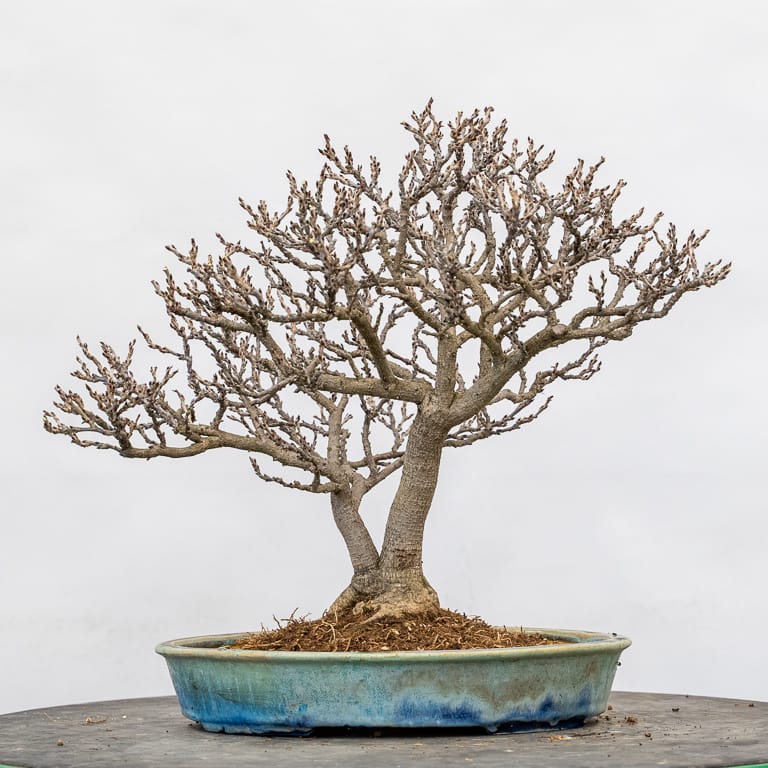
Pot #8 – Minarai
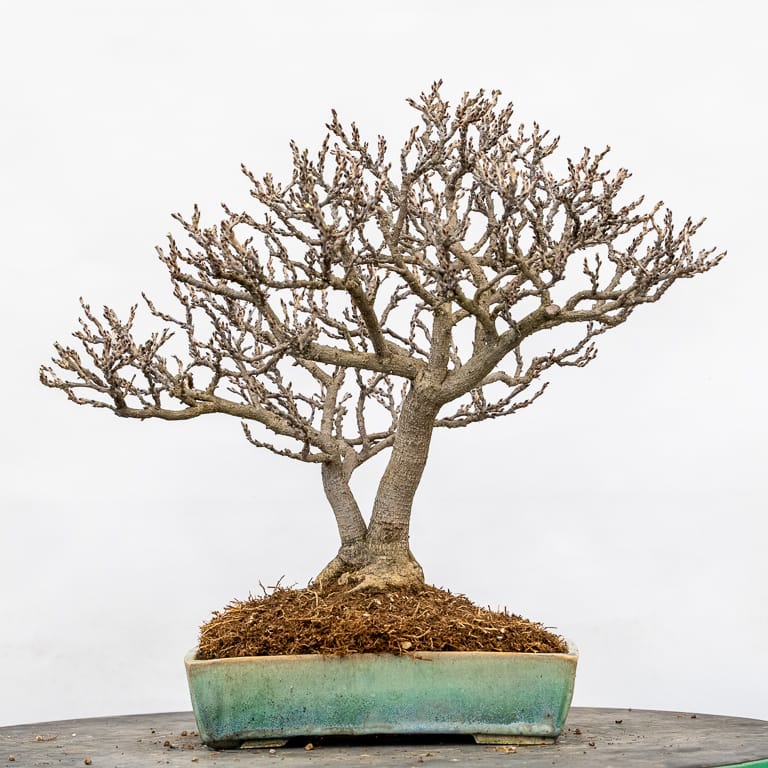
Pot #9 – Minarai
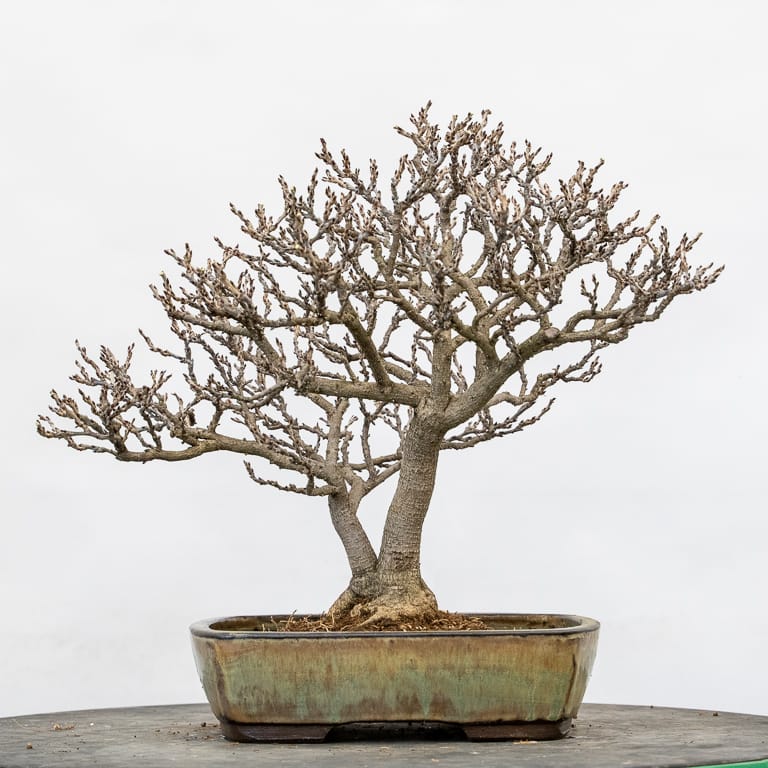
Pot #10 – Rayner
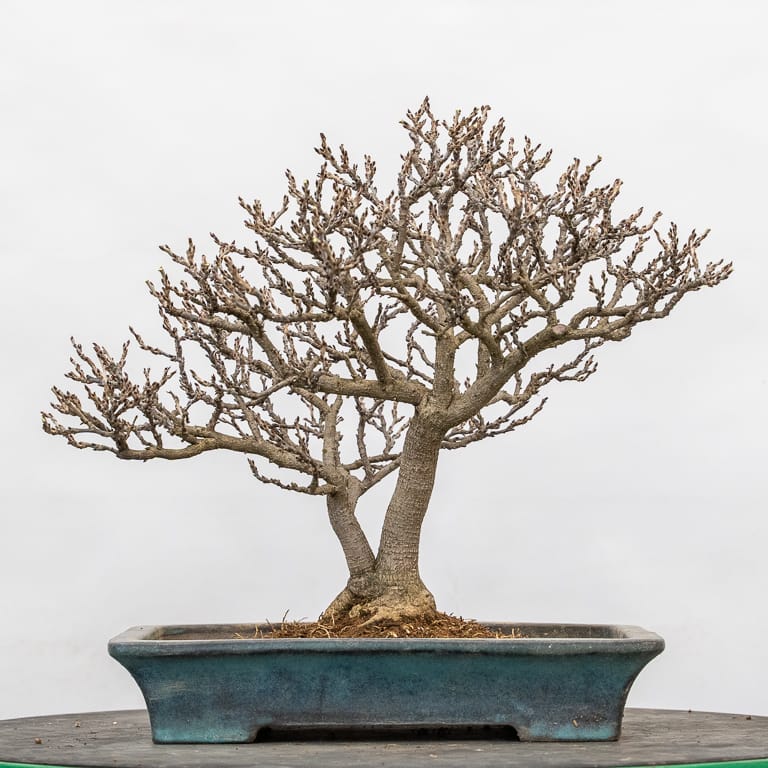
Pot 11 – Japanese
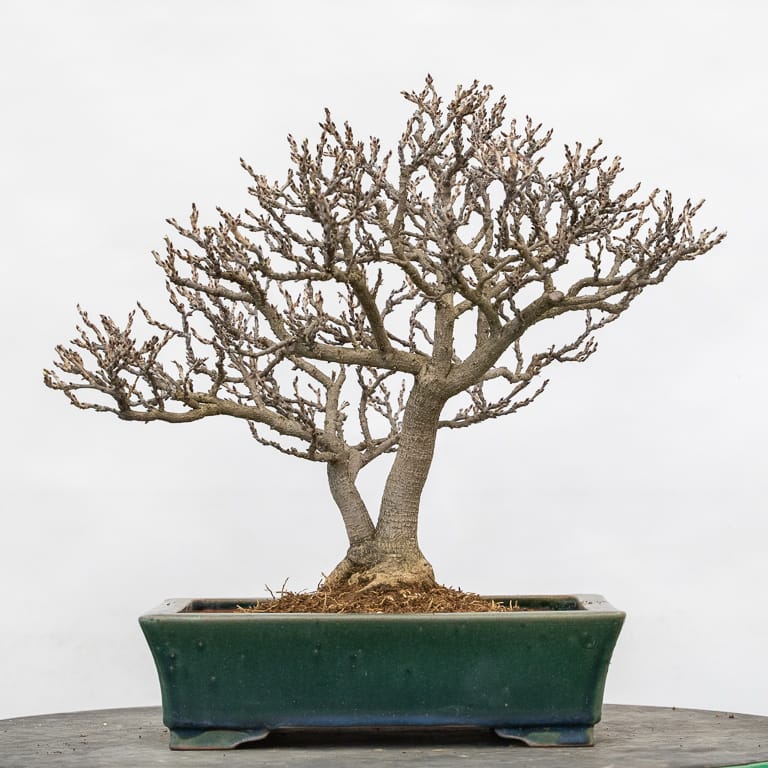
Pot #12 – Ikko
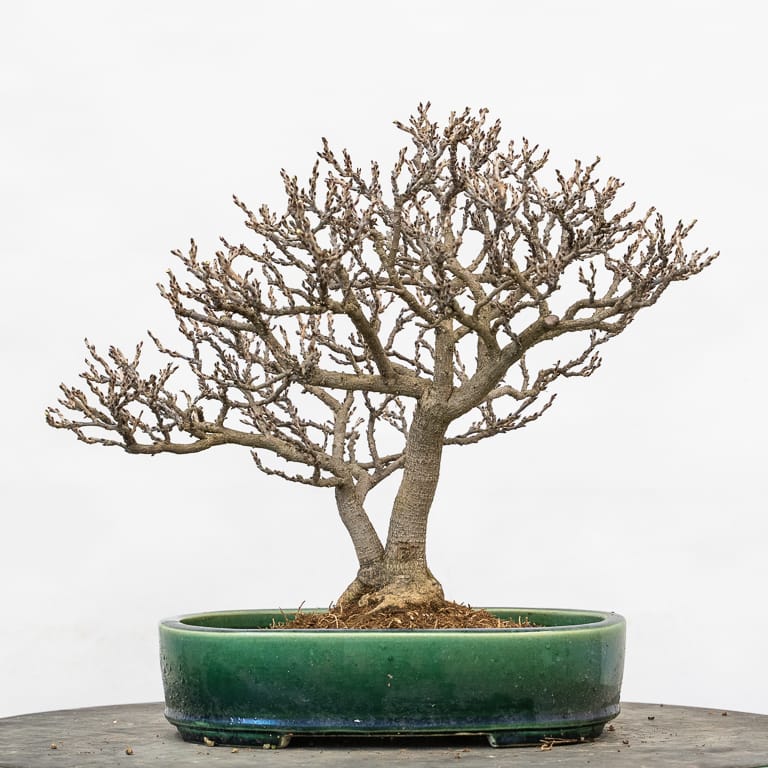
Pot #13 – Mazan
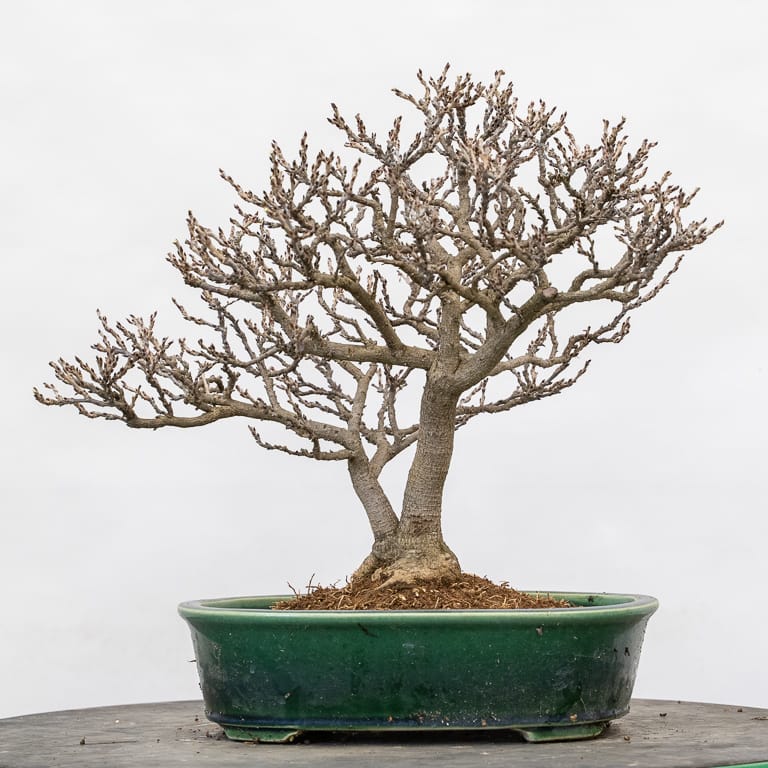
Pot #14 – Mazan
A number of the pots surprised me by how well – or how poorly – they worked for the tree. The pot I used last year worked well. If I had another one like it that was larger I’d likely use it.
Pots 2 and 3 were good stylistic matches, but they were both shallow and wide. Narrower versions would have looked better but they would have done little to help the tree grow larger.
I found pots 4, 5, and 6 to be suitable in terms of their style, but pot 6 was too large. And although these pots did little to highlight the tree’s branches, foliage, or flowers (if it were to bloom), the sizes were appropriate.
Pot 7 is way too big, but I think the shape is great for the tree.
Pot 8 was a great match were the tree going in an exhibit, but I’d want it to be deeper to support additional growth. Pot 9 was another favorite of mine – a surprise, given the shape – but it was one size too small.
I liked the color and size of the Rayner (pot 10), but the increased depth made the trunk look small. This is in part due to the darker color of the glaze. Pots 4 and 5, for example, were even deeper, but because they are lighter in color they don’t attract as much attention.
Pots 11 and 12, while beautiful, are too much for the tree. And I was surprised that pots 13 and 14 did so little for the tree. Pot 14 would have looked better were it smaller, but the dark color makes the container stand out too much.
In the end, I went with pot number 4.
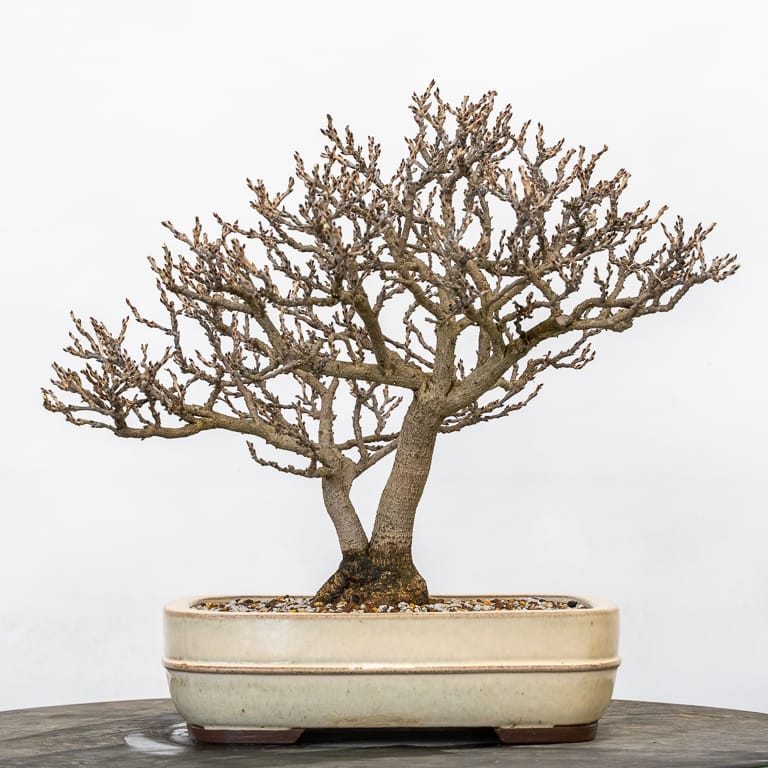
The winner – pot #4
The size is appropriate for my development goals and the light color and slender band across the middle help the pot take up less visual weight.
My takeaway from this exercise? If I want to downplay the tree’s slender trunk, use a light-colored glaze.
I expect you had favorites too – feel free to note them in the comments below!
Subscribe to Bonsai Tonight
New Posts Delivered Every Tuesday and Friday
Todd Ellis says
It would be great to see this tree in full bloom to get an idea of how it would look with your pot choice. I like the shape and color of #3 pot… beautiful tree btw!
Jonas Dupuich says
Thanks Todd – I’d love to see it in full bloom too! It hasn’t flowered yet, but I’m optimistic that it might someday 🙂 Thanks for the note!
Zack Clayton says
I always like the thought that goes into how you make your pot selection on these posts. without information on how much “step up” you wanted for the tree, I was thinking number 7. But 4 was a close second in appearance. Pot 1 was a no brainer as it was the current pot and should look the best, but you had stated you wanted the tree to up size.
Jonas Dupuich says
Thanks Zack, it’s fun to hear that someone else appreciated pot #7! I was really happy with the Chamberlain and will look forward to using more of them in the future.
Robert Miller says
I particularly liked pot #10; the Sara Raynor pot. To my eye the coloration of the pot integrates best with the trunk itself. If the tree were floated higher in the pot so it was on a bit of a mound, the base might look more substantial relative to the pot depth.
Jonas Dupuich says
Thanks Robert – I think that’s right about mounding it up a bit. That little separation between trunk and pot can make a big difference, and the color would be pretty with the pale green foliage.
Thomas Morphis says
Fascinating to see all these options with the tree placed within. On my first quick run-through I picked #4 as a great match, so I was glad to read it was your choice!
Jonas Dupuich says
Great choice Thomas 😉
arjun sawhney says
#9 was my favorite and #4 wasn’t that far behind. Thanks a lot for showing us your thought process. Since pots in the off-white ish category are not my go-to glaze hence #9 was my pick. But I agree with you that #9 is a little too small – perhaps it could be used only for showing and just slip potted the weekend before ?!
Jonas Dupuich says
Thanks Arjun! 9 could work for an exhibit, but I’d have to cut a lot more of the roots away to fit it in. After seeing how 9 looked with this tree, I’m hoping to use it with another tree before long.
Arke says
I would prefer the tree to be in no.3 pot.even if it is a wider pot.
Richard Dorfman says
The Sara Rayner pot seems a perfect match and head and shoulders about the rest (visually). Jonas: It appears nearly as deep as your choice (#4). Why do you feel the Rayner pot isn’t deep enough?
Tony says
it was a great program!…thank you for the insights.
James Horine says
I liked pot number 1 best for several reasons. It seemed to suit the tree the best and the color is neutral. Great article to!!
Justin says
I would have chosen #1 or #10. I think both the light color and design of #1 is pleasing yet #10 also works very well.
Kevin Ward says
Though the period in bloom is short lived it is the reason most people grow wisteria. That is why I would have loved to see the bloom color, in bloom the show stopper pot choice would probably have been No 8 for 90% of people. The bare tree does looks best in No 4, I agree! Thanks for putting together such a diverse choice for one beautiful tree and giving everyone a chance to see the variables.
Danny Powell says
Is pot #3 a Hattori? Glaze/shapes look like it could be
Jonas Dupuich says
It could be – I’ve forgotten and need to look up the chop.
Pierre Seguin says
Excellent article and a nice exercise in pot selection. Interesting that the “shiro” (cream) coloured pots all did better compared to the coloured (blue and green) ones. Could the more neutral whitish color is more suitable with winter silhouette? Is it because there are no flowers or fruits to get the viewer attention, that the coloured pots have too much visual weight so they appear bigger? Interesting isn’t it?
I too preferred the #4.
What is the species (latin name) of this wisteria?
Japanese and Chinese wisteria tend to not flower when given a lot of space. Could this species reacting the same? Maybe you need to restrict root growth to force the flowering?
Thanks again for the best bonsai blog…
Jonas Dupuich says
Hi Pierre! It is interesting that the light colored pots look good, and I think you outlined the reasons well – darker pots have more visual weight.
The species is Millettia japonica ‘Microphylla’. It’s not common for them to bloom under any circumstances, but they can produce flowers sometimes. I’d kept the tree fairly constrained for several years with no luck in terms of flowers so I’m going to try fertilizing heavily and further develop the branches. Will be curious if that makes a difference.
Charlie Mosse says
Another excellent lesson. The lighter pots do fit the tree better as discussed. I liked your choice for the color and that it will be a growing pot too. It look nice in the nursery while it is developing. Thx!!
Jonas Dupuich says
Thanks Charlie!